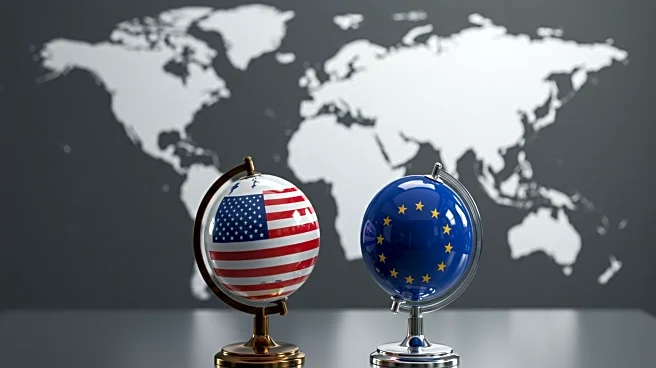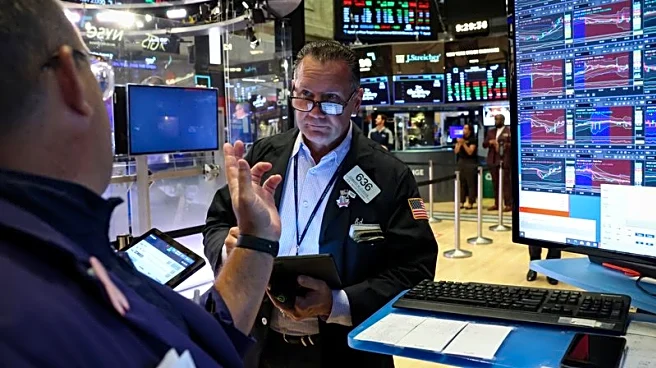What is the story about?
What's Happening?
The United States and the European Union have released details of a new bilateral trade agreement, which President Trump described as 'the biggest deal ever made.' The agreement includes a 15 percent duty rate for European imports to the U.S., with provisions for reciprocal tariffs. The U.S. will apply either the Most Favored Nation (MFN) tariff rate or a combined rate of 15 percent on EU goods. The EU will eliminate tariffs on American industrial goods and provide preferential access for agricultural products. The agreement also includes a commitment from the EU to invest $600 billion in strategic sectors in the U.S. by 2028. The fashion industry, represented by the American Apparel and Footwear Association and the Council of Fashion Designers of America, has expressed relief that the new reciprocal rate will not be stacked on top of existing MFN rates.
Why It's Important?
This trade agreement is significant as it aims to strengthen economic ties between the U.S. and the EU, potentially boosting trade and investment. The elimination of tariffs on American industrial goods by the EU could enhance U.S. exports, benefiting industries such as agriculture and manufacturing. The fashion sector, which has been concerned about high tariffs, stands to benefit from the non-stacking of reciprocal rates, potentially reducing costs for imports. The agreement also addresses sustainability standards, aiming to prevent undue restrictions on transatlantic trade, which could impact U.S. companies exporting to the EU.
What's Next?
The agreement outlines future negotiations on rules of origin to ensure benefits accrue to the U.S. and EU, addressing issues like transshipment and duty evasion. The U.S. Department of Justice plans to increase trade enforcement efforts to tackle tariff evasion. The EU will work to ensure its sustainability directives do not impede U.S. exports. Both parties commit to addressing digital trade barriers, with ongoing discussions about compliance with EU digital regulations.
Beyond the Headlines
The agreement highlights the Trump administration's focus on trade enforcement and economic security alignment. It underscores the importance of addressing non-market policies and enhancing supply chain resilience. The inclusion of sustainability standards reflects a growing emphasis on environmental and labor considerations in international trade.
AI Generated Content
Do you find this article useful?












